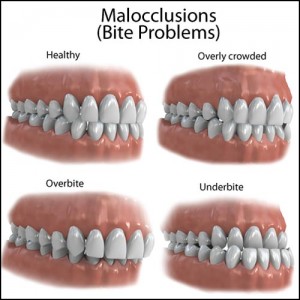
Whether you’re considering getting braces, or you’re currently in orthodontic treatment here at Horner Barrow Orthodontics, there are many things to know about straightening your smile. Orthodontic treatment isn’t just about wires, brackets and elastics. There are many interesting facts to learn about orthodontics and braces, and why straightening your teeth is easier than ever before.
• NASA originally created the wires that are used with braces.
Some wiring used for braces contains nickel titanium, an alloy that NASA originally developed for use in the space program. When used in orthodontic appliances, these light-weight, thin, highly-elastic and flexible wires are activated by body heat and will maintain their shape after being bent and attached to the teeth.
• Braces have been around for nearly 300 years.
Pierre Fauchard, born in 1728, and considered the Father of Dentistry, invented an appliance called a bandeau. The horseshoe-shaped strip of metal had regularly-spaced holes that fit around the teeth to correct their alignment. Fauchard would also operate on patients using a set of forceps called a pelican, to forcibly realign teeth and tie them to the adjacent teeth to hold them in place while they healed. Ouch!
Later, Christophe-François Delabarre (1787-1862) tried to separate overcrowded teeth by inserting swelling threads, or wooden wedges, between each space. In the 20th century, with a better understanding of malocclusion, dentist Edward Angle, considered the Father of Modern Orthodontics, introduced more advanced and modern orthodontic appliances, like brackets, to effectively address issues with tooth misalignment.
• All orthodontists are dentists.
All orthodontists are dentists, but only about 6 percent of dentists are orthodontists. An orthodontist is a dentist who specializes in the prevention and treatment of teeth irregularities, such as an improper bite. After graduating from dental school, an orthodontist must then successfully complete an additional two to three years of education from an accredited orthodontic residency program.
• The desire for straight teeth can be traced all the way back to ancient Egypt.
Even though braces weren’t created until the early 18th century, people have wanted straight, beautiful smiles for thousands of years. Several mummies were discovered with cords crafted from animal intestines wrapped around their teeth, similar to modern braces wiring. Archaeologists believe this was man’s first efforts to straighten crooked teeth.
• Retainers are as important as braces.
The long-term success of a patient’s orthodontic treatment depends on how their dedication to wearing their retainer. Approximately 25 percent of patients who wear braces have to get them again at some point in their lives because they failed to wear their retainers as instructed, causing their teeth to revert back to their original misalignment. Remember to wear your retainer as instructed by your orthodontist to maintain a beautiful, straight smile for a lifetime!
• Braces aren’t just for kids.
Just because you didn’t wear braces as a child doesn’t mean your chance for a straighter smile has passed you by. According to the American Association of Orthodontists (AAO), approximately one in five orthodontic patients is an adult, and many of those patients are in their 50s, 60s and 70s. Kids, parents and grandparents can enjoy the benefits of a straighter smile with orthodontic treatment.
• Right now, millions of people in the United States are wearing braces.
According to the AAO, approximately 4 million people in the United States are wearing braces, or some type of orthodontic appliance, to straighten their teeth. 75 percent of those receiving orthodontic treatment are younger than age 18.
• Famous people wear braces to straighten their teeth, too!
Do you ever wonder how celebrities get those Hollywood smiles? It’s not always due to good genetics. Just like the rest of us, many famous actors, singers and other well-known professionals have worn orthodontic appliances to correct dental issues and enhance their smiles. Those who’ve worn braces include Angelina Jolie, Tom Cruise, Ryan Seacrest, Faith Hill, Gwyneth Paltrow, Faye Dunaway, and Britain’s Prince Harry, as well as many other famous people.
• Don’t believe all the stories you hear about braces.
Many of the rumors you have heard about braces are simply not true. Braces do not set off metal detectors. You cannot “lock braces” when kissing someone who’s also wearing braces. Braces do not interfere with radio signals. Wearing braces will not increase your chance of being struck by lightning. Yes, you can still play a musical instrument, or safely play sports while wearing braces.
• An orthodontic evaluation by age 7 is very important.
The AAO recommends bringing your child in to have an orthodontic evaluation as soon as any tooth irregularities appear; and no later than age 7. An early evaluation will help to determine if problems are present, and to schedule the most appropriate timeframe for orthodontic treatment, if deemed necessary. This is important because many conditions are much easier to treat if they are identified early.
Now that you’ve read these interesting orthodontic facts, you can see how the techniques and tools used by orthodontists to straighten teeth have evolved and improved over many, many years. One thing that hasn’t changed; people have always desired a straight, beautiful smile.
If you want to learn more about improving your smile with braces, call our Sioux Falls, SD office today to schedule a consultation with Dr. Kevin Horner or Dr. Keri Barrow about the options for orthodontic treatment. If you’re considering getting braces, there are many things you should know about straightening your smile. Orthodontic treatment isn’t just about wires, brackets and elastics. There are lots of facts to learn about braces, and why straightening your teeth is easier than you may have thought possible.
At Horner Barrow Orthodontics, we are committed to delivering excellent quality orthodontic treatment to each and every patient. To provide a friendly, caring, and pleasant atmosphere that will ensure our patients feel relaxed and confident about placing their orthodontic care in our hands.









